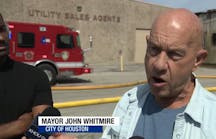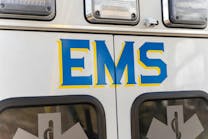The controversy began in February, when the Beltsville, MD, Fire Department responded to a personal-injury accident on Interstate 95 in Prince Georges County, a Washington suburb. The officer in command was Deputy Chief Joseph Reising, a veteran of 28 years in the fire-rescue service, including 18 years as a career firefighter and 20 years as a volunteer chief. Arriving on the scene with an engine and ambulance, he found a two-car accident on the southbound side of the road, with three injured occupants trapped inside one of the vehicles.
A paramedic informed him that the driver appeared to have a traumatic injury and Chief Reising immediately called for another ambulance and heavy rescue squad for extrication. But both became delayed in traffic that had backed-up in the northbound lanes. Reising then advised them by radio to approach on the southbound side and ordered all four lanes shut down for the few minutes it would take for the additional apparatus to arrive.
At that point, two Maryland state troopers reached the scene and one demanded to know why Reising had closed the southbound lanes. He explained that a medic unit and rescue squad were coming up the wrong way. According to Reising, the trooper ordered him to open the lanes, stating, "I'm in charge here." The police officer - who did not go within 100 feet of the car or talk to the paramedic - argued that he could see people moving their heads inside the vehicle and insisted that they were not seriously injured. Reising ignored his order and was immediately arrested, handcuffed and led to a police car.
When the squad arrived, they had to remove the vehicle's doors to free the victims. As it turned out, two had minor injuries and the third recovered from more serious, but non-traumatic injuries. Chief Reising was charged with disturbing the peace, disobeying a police officer and hindering free passage. A few months earlier, he had been involved in an incident with a state policeman dressed in plainclothes who objected to him using his chief's car to block one lane of I-95 while rescue crews were treating accident victims. (That case was dismissed when the officer didn't appear in court and Reising later received a letter of apology from the state police.)
But the February incident drew widespread attention when the Washington Post's "Dr. Gridlock" column reported it and gave the state police "three cheers" for arresting "an obstreperous volunteer fire chief" who had refused to open the interstate after a "minor" traffic accident. That touched off a flurry of letters from both police and firefighters, each defending their own side. It has been a particularly sensitive issue in the Washington region since November, when miles of the Beltway became a parking lot after police closed it for five hours while trying to prevent a would-be suicide from jumping off a bridge. He eventually jumped and survived, but public opinion remains inflamed against authorities who shut down highways.
When Reising's case came up in court, the judge heard three hours of testimony before finding him not guilty on two charges and dismissing the third. Attorney William Brennan argued that Reising was protecting everyone on the scene, had "no intent" to commit a crime and that Maryland law gave firefighters the authority to "direct and control" an accident scene "until sufficient police arrived." Apparently, the judge agreed that two officers were not sufficient in this situation, but the phrase leaves some room for misunderstanding.
That ambiguity prompted fire and police officials to start drafting a memorandum of understanding to clarify the lines of authority. A spokesman for the Prince Georges Fire Department - which firmly supported Chief Reising - told Firehouse: "We want the maximum safety for our personnel and if it means we have to shut down traffic lanes to create a buffer zone, that's what we have to do."
I must disclose that Chief Reising is my personal friend and he has a well-earned reputation for being a tough and experienced firefighter. As he describes the incident, he was only doing what any responsible fire officer would do. "I just hope the public realizes that when we do this, we're doing it to protect them, our own people and the accident victims," Reising explains.
This is not the first time that fire and police officers have clashed over the question of who's in charge. But it's the first I've ever heard of in which a fire chief was arrested. More important, we all know of too many tragic incidents in which fire-rescue personnel were killed or injured when struck by passing cars on the scenes of accidents. Bitter experience has taught that a highway can be just as dangerous to firefighters as a burning building.
The laws on who's in charge vary from state to state and it's imperative that every fire department operates under clearly defined lines of authority. As for public opinion objecting to the closing of traffic lanes, the answer to that is to ask the angry motorists how they would feel if they or their relatives were trapped in a wrecked car and waiting for a rescue squad or ambulance to arrive.
Hal Bruno, a Firehouse® contributing editor, is a retired political director for ABC News in Washington and served for 40 years as a volunteer firefighter.




